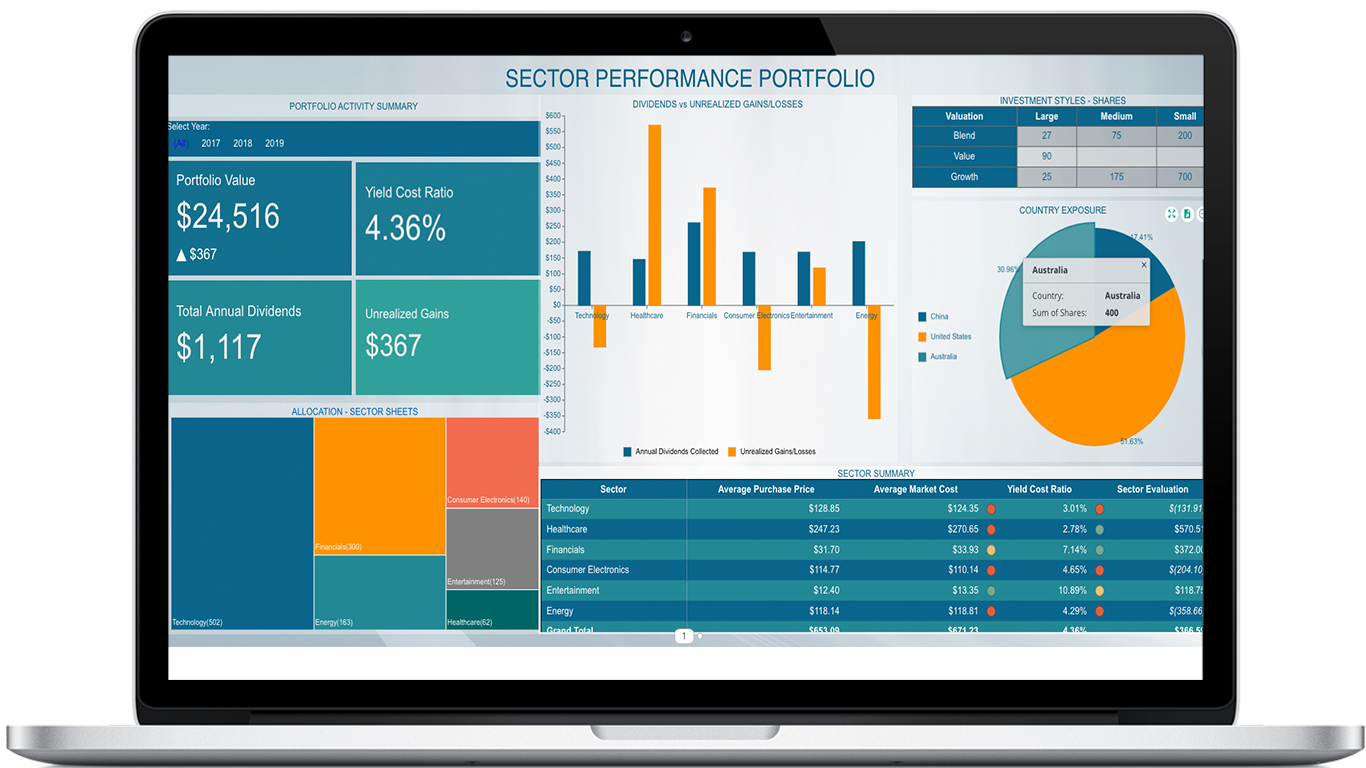Something all companies strive for is establishing a data-driven culture. Especially now, since we have more data than ever before–175 zettabytes by 2025, to be exact. To make all this data usable, companies must collect, organize, analyze, integrate, and distribute it. This is where Business Analytics comes in and why more and more companies are adopting its use and using BI to their advantage.
Let’s take a look at some BI adoption trends for 2022
BI market size statistics: The BI market is driven by other intertwined industry developments, particularly in the analytics, big data, and AI markets. The United States is still the most lucrative market, but China has the highest growth rate.
The BI software market size had revenues of $22.8 billion worldwide in 2021. This is expected to increase by 44% in 2027, with revenues expected to hit $32.8 billion. In terms of growth rate by 2027, China registers the most significant leap at 119.8%, followed by the US (37%), closely followed by Germany and Japan (36.7%) and then the UK (31.5%).

BI investment: BI is one of the more mature business systems in an organization's tech stack. More employees are using BI, while at the same time, more companies are planning to hire full-time IT personnel to manage business intelligence initiatives. In 2021, BI came in fourth place where B2B technology buyers (38%) spent money. Web & video conferencing topped the list with 64%, followed by online collaboration & project management and marketing with 53% and 41%, respectively. These numbers can significantly be attributed to Covid and working from home. Despite current employees having access to and using BI, in 2021, 73% of CIOs are considering hiring full-time IT employees for analytics platforms, the second-highest among CIO plans for full-time tech positions.
While statistics show companies plan to hire IT employees to manage BI, self-service BI solutions are incredibly user-friendly. Empowering employees to use BI can lead to faster insights, increased team collaboration, overall employee satisfaction, etc.
Upcoming trends do show BI spending per employee is expected to increase by 30% in the coming years:
- $6.96 in 2022
- $7.35 in 2023
- $7.76 in 2024
- $8.17 in 2025
- $8.57 in 2026
- $8.96 in 2027
Costs for BI software vary greatly. With Wyn Enterprise, you can say goodbye to user fees because of their flat-fee pricing model. This means that Wyn’s scalable licensing model allows room for your business to grow without growth in licensing fees.

BI perceived criticality: Many industries (i.e., business, financial, and insurance) have been using BI for years and have mature BI integration in place. Looking ahead though, more niche industries are starting to see the need and benefit of implementing BI software. Because industry needs and processes vary greatly, it is essential to find an embedded BI solution that can support all business types when searching for a BI system. Wyn Enterprise includes numerous dashboards and reports to suit the specific needs of assorted industries. Although perceived criticality has decreased in the last three years, sentiment remains important to very important for adopting a BI solution.

BI adoption by industry: BI is considered a must-have to meet business goals across many industries. However, some industries give BI more weight than others.
By industry, cloud BI as a critical and very important system is most apparent in:
- Technology (77%)
- Education (76%)
- Healthcare (61%)
- Business Services (50%)
- Financial Services (50%)
- Retail (38%)

On the other hand, Government (42%) and Manufacturing (28%) scored the lowest in terms of adoption. These numbers can be due to various things, but one apparent reason for Government is the sensitive nature of the data. When searching for a BI system, it is crucial to find one with extensible security so your IT team can easily manage roles, permissions, licenses, users, and security.

To view the complete Embedded BI Adoption Trends 2022 infographic, click here.
Summary: There is no doubt that BI can fuel your company’s growth, and adopting a BI solution can help you gain deeper market insights, operational efficiency, and, overall, a competitive advantage. To ignore the impact BI could have on your business is to risk your company’s future while most likely allowing your competitor to move ahead. We live in a data-driven business landscape where business intelligence fuels your company’s profitability and continuous growth.
*Sources: Statista 2022 (May update), Dresden Wisdom of Crowds BI Study 2022, FinancesOnline 36 Best Business Intelligence Software Statistics: 2022 Market Share & Data Analysis.





























